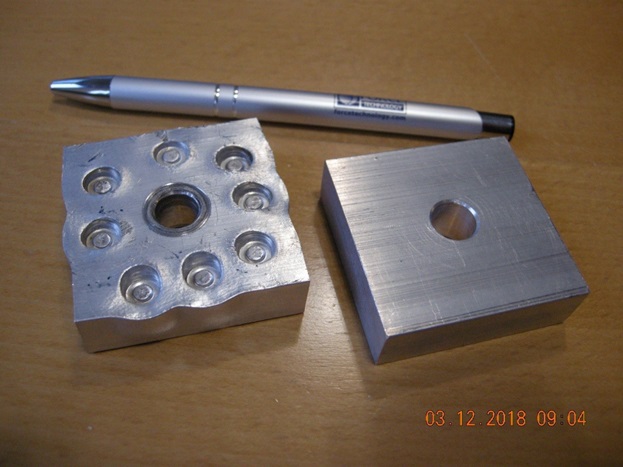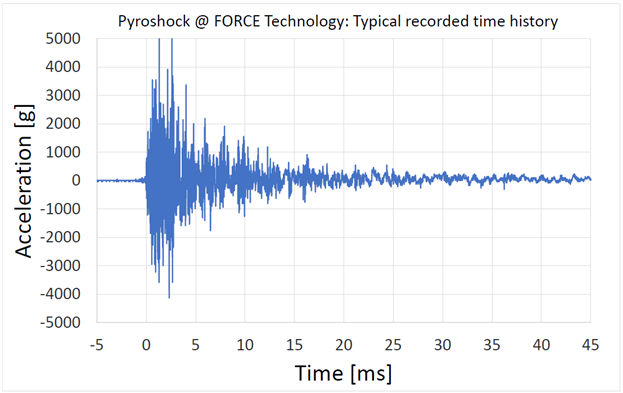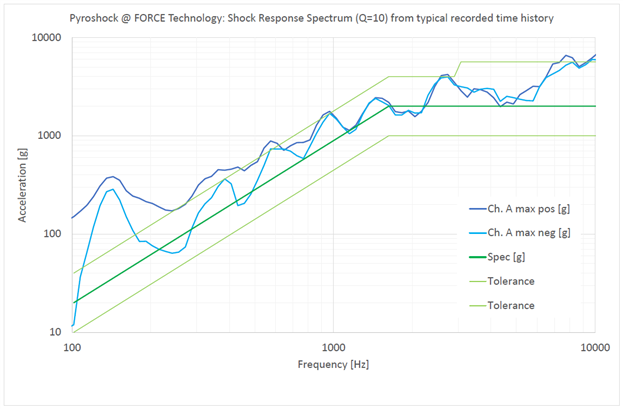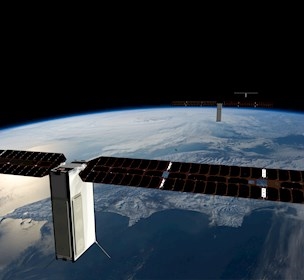How pyroshock testing helps launch satellites into space
Sending a satellite into space requires immense power. Before launch, the satellite's equipment must be thoroughly tested with regard to the effects of the launch.
A pyroshock is a mechanical shock that can occur when a sufficiently stiff structure is subjected to an explosion, generating a high-frequency, high-level time history that is transferred throughout the structure. For example, a pyroshock occurs when a satellite is released from its launch rocket, accomplished by blasting apart special screws that have explosive charges built into them.
A pyroshock often has a highly complex time history, which means that it cannot be defined exclusively in terms of acceleration as a function of time. It is instead often specified in terms of its shock response spectrum (SRS). In short, this spectrum describes how an arbitrary eigenfrequency responds to a given shock. Thus, an SRS plots eigenfrequencies in Hertz (Hz) along the x-axis, and maximal acceleration values (in g or m/s2) experienced by a simple resonance along the y-axis. A simple resonance is often designated a single degree of freedom (SDOF).
While traditional shock tests are often performed with an electrodynamic vibrator or a dedicated shock testing machine, somewhat more specialised test set-ups are required for performing pyroshock tests. For example, a solution with a pendulum can be used, in which one metal mass strikes another on a plate that holds the test object. The pendulum can be replaced with a small cannon that fires a metal projectile. At FORCE Technology, we have developed a set-up in which we use a powerful, gunpowder-based nail gun to fire directly down and into a metal plate.
Photo 1 shows the 15 x 50 x 50 mm aluminium block we fire at. It can be seen that one block has yet to be used, while the other has been used for 8 shock tests.

Figure 1 shows an example of a typical time history achieved using our pyroshock set-up. As shown, we achieved peak values of several thousand g's. The shock comprised many high frequencies and the main part was over after 10 to 20 milliseconds.

Figure 2 shows the shock response spectrum (SRS) for this shock. The green lines are specific nominal values with tolerances, and the blue curves are the maximum positive and negative SRS values for the shock. As shown, the SRS for this particular time history fits quite well with the nominal spectrum and its tolerance boundaries — apart from the 100 to 200 Hz frequency band, in which we "overtested" slightly.
Our first actual pyroshock test was performed on a colour calibration object developed by the Niels Bohr Institute for NASA's Rover, to be sent to Mars in the year 2020.



